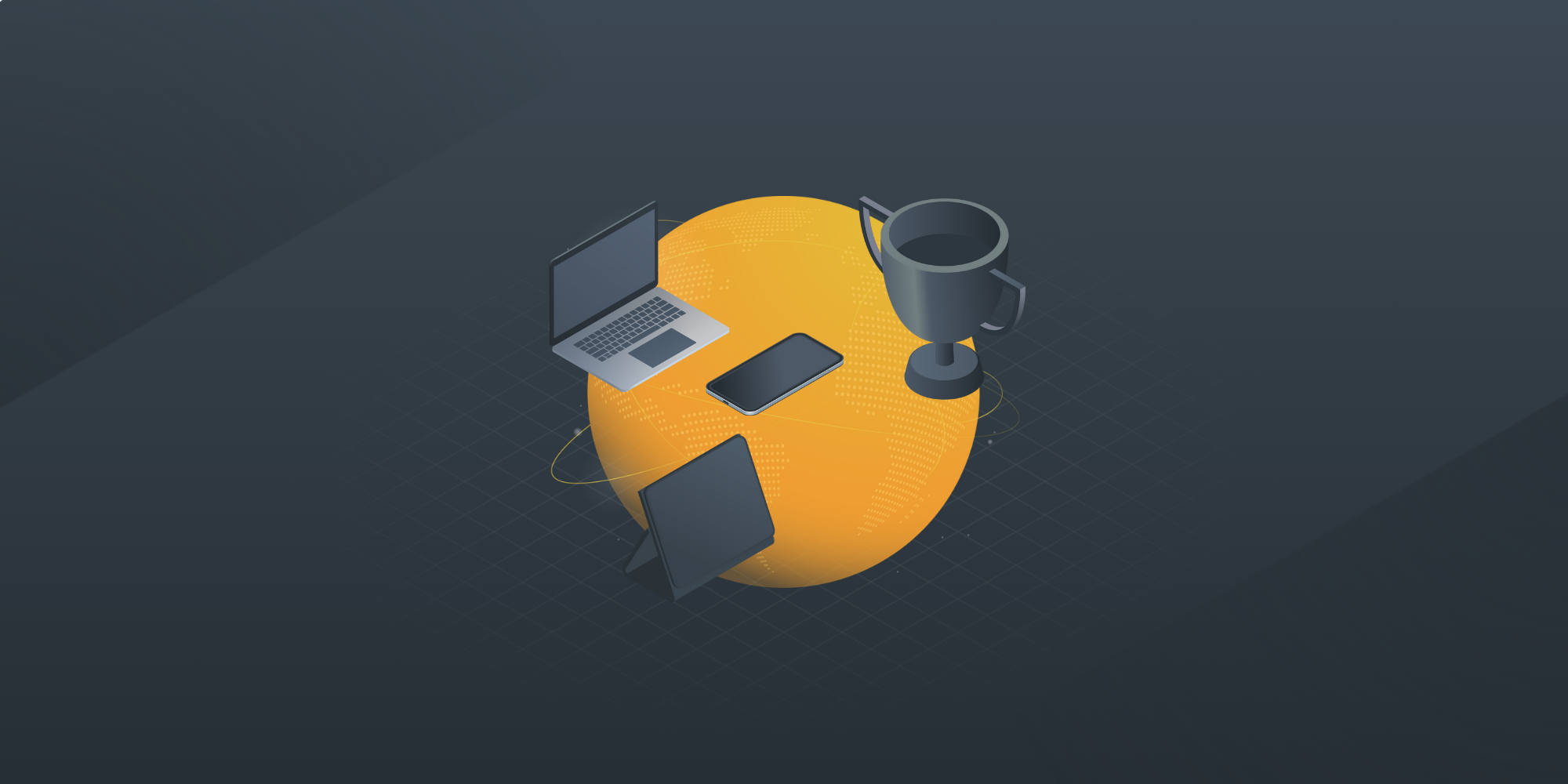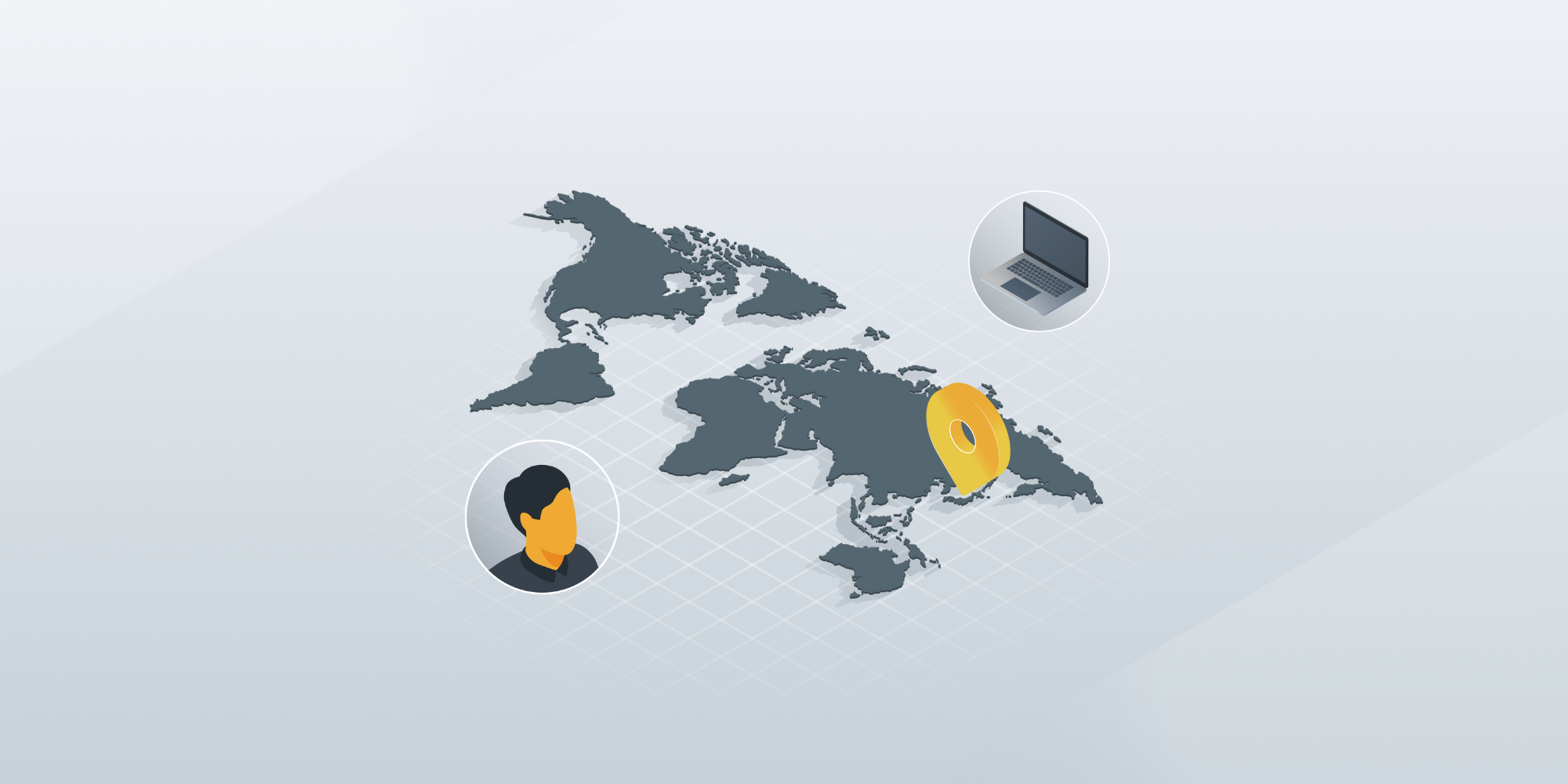What is zero-touch deployment? How to embrace effortless IT operations
 GroWrk Team
GroWrk Team
Zero-touch deployment is an IT strategy that automates device configuration without manual setup. It helps businesses deploy devices quickly, reduce errors, and maintain security.
A study by IDC found that organizations implementing automated device deployment experienced a 50% reduction in setup time and a 70% decrease in IT support costs. These statistics underscore the transformative impact of zero-touch deployment on operational efficiency and cost savings.
Zero-touch deployment ensures consistent compliance while allowing teams to focus on strategic initiatives rather than mundane setup tasks. This article explains zero-touch deployment, how it works, and its benefits for companies and distributed team members.
Key takeaways
-
Zero-touch deployment automates device configuration, enhancing efficiency and security while minimizing human error in IT environments.
-
Key components like DHCP and TFTP facilitate the automated IT onboarding process, allowing devices to self-configure upon startup without manual intervention.
-
This strategy is particularly beneficial for remote employees, enabling rapid deployment of pre-configured devices directly to their locations, thereby improving productivity and reducing the need for IT support.
Understanding zero-touch deployment

Zero-touch deployment is an IT strategy designed to automate device configuration, eliminating the need for manual intervention. This approach significantly enhances efficiency in IT equipment deployment by streamlining the setup process. It allows companies to roll out new devices rapidly while maintaining stringent security and IT compliance standards. This method is often referred to as zero-touch deployment.
The answer to what zero-touch deployment is is simple. The essence of this approach lies in its ability to reduce human error, which is often a significant contributor to security breaches and operational inefficiencies. Zero-touch deployment boosts security and consistency across an organization’s IT infrastructure by ensuring devices adhere to predefined standards.
Key components of zero-touch deployment
In a world where businesses increasingly rely on technology, zero-touch deployment is crucial in the efficient and secure deployment of new devices. It allows IT teams to focus on more strategic tasks, ensuring the company’s IT ecosystem remains robust and safe without constant manual oversight. Here are the main components of Zero Touch Deployment that every organization must know:
-
Dynamic host configuration protocol (DHCP): Automatically assigns network parameters, such as IP addresses, to devices upon startup, eliminating the need for manual configuration and streamlining the setup process.
-
Trivial file transfer protocol (TFTP): Facilitates the transfer of configuration files necessary for device operation during startup, ensuring devices are efficiently configured without manual intervention.
-
Automated configuration: Integrates DHCP and TFTP to enable seamless device configuration, drastically reducing the time and effort required for manual setup.
-
Centralized management: Allows IT teams to manage and monitor devices remotely, ensuring consistent configurations and compliance with corporate policies.
-
Security and compliance: Ensures that all devices adhere to predefined security standards from the moment they are powered on, minimizing vulnerabilities and enhancing overall security.
-
Scalability: Supports the deployment of multiple devices simultaneously, making it ideal for organizations with large-scale device rollouts.
How zero-touch deployment works

Zero-touch deployment automates the entire device onboarding process, allowing configurations to be applied without any manual intervention from IT staff. When powered on, a device connects to a centralized server to fetch its predefined configurations, eliminating the need for manual setup. This process is enhanced through the deployment of zero-touch provisioning and zero-touch configuration.
Once a new device is powered on, it runs a boot file to retrieve configurations from DHCP or TFTP services, ensuring all necessary settings and software are applied. Users can then log in and start using the operating system immediately. IT administrators can define these configurations and software preferences during the initial setup phase, ensuring all devices comply with corporate policies.
One of the most significant advantages of zero-touch deployment is that it allows for the direct shipment of devices to employees. Upon arrival, the devices are pre-configured and ready for use, requiring only that users power them on and input their credentials. This approach is especially advantageous for managing distributed IT teams, who can receive and set up their devices without IT assistance.
Benefits of ZTD for distributed employee teams
Once you understand zero-touch deployment, it is time to know the benefits of this approach. Zero-touch development offers a range of benefits that significantly enhance the efficiency and security of IT operations, particularly for distributed employees. By automating the configuration and deployment of devices, this approach minimizes manual intervention, reduces the risk of human error, and ensures consistent compliance with corporate standards. Here are some key benefits of zero-touch deployment:
Enhanced productivity for distributed teams
Zero-touch deployment allows distributed employees to receive fully configured and ready-to-use devices right out of the box. This eliminates the need for lengthy setup processes and enables employees to start working immediately, boosting productivity and reducing downtime.
Minimized human error
Automating the device configuration process significantly reduces the chance of human errors, often responsible for security vulnerabilities and operational inefficiencies. Organizations can ensure consistent and accurate configurations across all devices with zero-touch deployment.
Improved security and compliance
Zero-touch deployment enhances an organization's overall security posture by adhering to predefined security standards. This approach ensures that all devices comply with corporate policies, reducing the risk of breaches and ensuring regulatory compliance.
Cost and time efficiency
Zero-touch deployment reduces the need for on-site IT support, thereby reducing costs associated with manual device setup. Automating repetitive tasks allows IT teams to focus on strategic initiatives, further optimizing resource allocation and improving overall operational efficiency.
Zero-touch provisioning for Apple devices

Apple devices benefit immensely from zero-touch provisioning thanks to features like Apple Business Manager and Automated Device Enrollment (ADE). When a new Apple mobile or device is powered on for the first time, it checks if it has been assigned to an MDM solution through Apple Business Manager. This ensures it is configured for management during the initial setup process and avoids human errors.
Automated device enrollment simplifies Apple's deployment and management, ensuring a seamless zero-touch user experience. Devices meet corporate standards right out of the box, minimizing the need for manual configuration and boosting productivity. This system is particularly beneficial for organizations deploying multiple devices, as it ensures consistency and compliance across all units through provisioning or automated devices.
Zero-touch provisioning for Apple streamlines the setup process and enhances security by managing devices from their initial power-on. This is a significant advantage in today’s remote work environment, where securing endpoints is paramount.
Device management with zero-touch MDM software
Mobile device management (MDM) software is crucial for managing mobile devices post-deployment. It allows IT administrators to monitor device performance, push updates, and manage security settings remotely. This ensures that all devices remain compliant with corporate policies and are protected against potential threats, a key aspect of enterprise mobility management.
MDM software automates device enrollment, integrating new devices into the organization’s systems upon activation. This streamlines management and reduces the need for manual intervention. IT teams can also use MDM to remotely lock or wipe devices in case of loss or theft, enhancing security.
Centralized orchestration platforms are critical in monitoring zero-touch deployments, especially during large-scale rollouts. These platforms help manage configurations and monitor device status efficiently, preventing configuration conflicts and ensuring smooth operation.
Best practices to ensure security and compliance during Zero-touch deployment
Security and compliance are paramount in zero-touch deployment. The automated provisioning process ensures that new devices are managed from the moment they are powered on, enhancing security. Compliance checks in zero-touch provisioning ensure devices meet security standards before deployment, reducing vulnerabilities.
Standardized configuration profiles help maintain uniform security settings and applications across all devices, reducing the risk of misconfigurations. This consistency is critical for maintaining a secure IT environment, especially in organizations with many devices, and is often overseen by a configuration manager.
Over-the-air updates enable IT departments to keep devices secure and updated without physical access. For instance, Apple’s WWDC 2023 introduced updates that will allow admins to allow FileVault to during the setup, ensuring data encryption from the start.
Future of remote work and device deployment

With the growth of remote work, reliance on zero-touch deployment will likely increase. This method enhances operational efficiency by enabling quicker software and security patch updates, significantly reducing downtime for distributed employees.
The shift to remote work has increased the need for efficient and scalable IT solutions. Zero-touch deployment addresses this by streamlining device management and ensuring compliance with security standards, highlighting the future of remote devices.
As organizations adopt remote work, zero-touch deployment will only grow in importance. It will become an essential tool for maintaining a productive and secure remote workforce.
Common challenges and solutions
Despite its many advantages, zero-touch deployment is not without challenges. Legacy systems may lack support for zero-touch deployment, necessitating the use of IT vendor management-neutral platforms to enable their integration. Additionally, deployment errors can lead to devices getting stuck or rebooting indefinitely, requiring remote work management tools to resolve issues effectively.
Zero-trust gateways can enhance security at sites from different locations without additional firewalls, reducing complexity and costs. Automating repetitive deployment tasks significantly reduces IT admins' time and effort to set up new devices, making the process more efficient.
Effective time-saving tools for IT admins
It is crucial for IT administrators to manage a complex IT environment efficiently. Time-saving tools like Workwize can automate the entire lifecycle of IT hardware, from procurement and deployment to management and disposal. This significantly streamlines processes within a zero-touch deployment framework, allowing IT admins to focus on more strategic tasks.
These cool time-saving tools can significantly reduce the time spent on manual tasks, enhancing overall productivity. Automating routine tasks allows IT admins to keep managed networks secure and up to date without constant manual intervention.
Wrapping up
Zero-touch enrollment or deployment is revolutionizing how organizations manage their IT infrastructure, particularly in remote work environments. By automating device setup and configuration, it reduces human error, enhances security, and increases operational efficiency. As remote work continues to grow, the reliance on zero-touch deployment will only increase, making it an essential tool for maintaining a productive and secure workforce.
In this evolving landscape, platforms like GroWrk provide a comprehensive solution for managing the complete lifecycle of IT assets globally. GroWrk stands out with its unmatched global reach, enabling companies to efficiently procure, configure, and deploy IT devices across 150+ countries. With advanced security, extensive integrations, and AI-driven support, GroWrk simplifies IT asset lifecycle management.
GroWrk enhances operational efficiency and ensures businesses can secure their managed networks while minimizing costs. Its transparent pricing and dedicated support make it a reliable partner for organizations looking to streamline their IT operations in a distributed workforce environment.
Get started today! Book a demo and discover how GroWrk can revolutionize your IT asset lifecycle management.
Frequently asked questions
What is zero-touch deployment?
The answer to what is zero-touch deployment is - an IT strategy that automates device configuration, requiring no manual intervention, thereby improving efficiency and security.
What are the key components of zero-touch deployment?
The key components of zero-touch provisioning are the Dynamic Host Configuration Protocol (DHCP) and the Trivial File Transfer Protocol (TFTP). These protocols facilitate the automated configuration and management of devices, ensuring seamless setup and minimal manual intervention.
How does MDM software support zero-touch deployment?
MDM software supports zero-touch provisioning by enabling the automated management, monitoring, and security of devices. This ensures they comply with corporate policies from the moment they are activated, significantly streamlining the deployment process.
What challenges are associated with zero-touch deployment?
Zero-touch deployment faces challenges such as integrating with legacy systems, managing deployment errors, and ensuring security at sites from different locations. Addressing these issues requires implementing vendor-neutral platforms, remote management tools, and zero-trust gateways.





